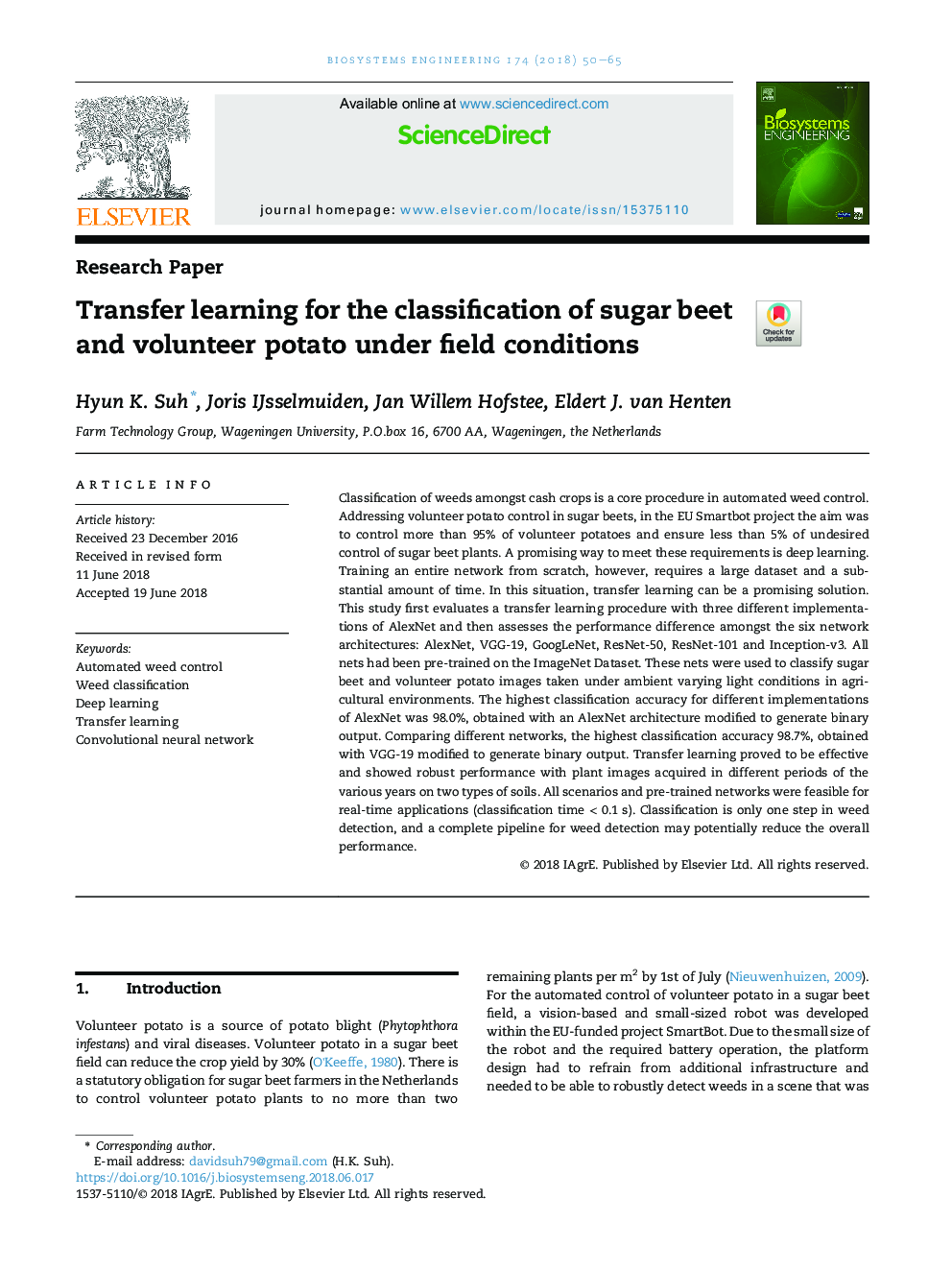| کد مقاله | کد نشریه | سال انتشار | مقاله انگلیسی | نسخه تمام متن |
|---|---|---|---|---|
| 8054609 | 1519488 | 2018 | 16 صفحه PDF | دانلود رایگان |
عنوان انگلیسی مقاله ISI
Transfer learning for the classification of sugar beet and volunteer potato under field conditions
ترجمه فارسی عنوان
یادگیری انتقال برای طبقه بندی چغندرقند و سیب زمینی داوطلب در شرایط مزرعه
دانلود مقاله + سفارش ترجمه
دانلود مقاله ISI انگلیسی
رایگان برای ایرانیان
کلمات کلیدی
کنترل علف های هرز اتوماتیک، طبقه بندی علف های هرز، یادگیری عمیق، انتقال یادگیری، شبکه عصبی متقاطع،
موضوعات مرتبط
مهندسی و علوم پایه
سایر رشته های مهندسی
کنترل و سیستم های مهندسی
چکیده انگلیسی
Classification of weeds amongst cash crops is a core procedure in automated weed control. Addressing volunteer potato control in sugar beets, in the EU Smartbot project the aim was to control more than 95% of volunteer potatoes and ensure less than 5% of undesired control of sugar beet plants. A promising way to meet these requirements is deep learning. Training an entire network from scratch, however, requires a large dataset and a substantial amount of time. In this situation, transfer learning can be a promising solution. This study first evaluates a transfer learning procedure with three different implementations of AlexNet and then assesses the performance difference amongst the six network architectures: AlexNet, VGG-19, GoogLeNet, ResNet-50, ResNet-101 and Inception-v3. All nets had been pre-trained on the ImageNet Dataset. These nets were used to classify sugar beet and volunteer potato images taken under ambient varying light conditions in agricultural environments. The highest classification accuracy for different implementations of AlexNet was 98.0%, obtained with an AlexNet architecture modified to generate binary output. Comparing different networks, the highest classification accuracy 98.7%, obtained with VGG-19 modified to generate binary output. Transfer learning proved to be effective and showed robust performance with plant images acquired in different periods of the various years on two types of soils. All scenarios and pre-trained networks were feasible for real-time applications (classification time < 0.1 s). Classification is only one step in weed detection, and a complete pipeline for weed detection may potentially reduce the overall performance.
ناشر
Database: Elsevier - ScienceDirect (ساینس دایرکت)
Journal: Biosystems Engineering - Volume 174, October 2018, Pages 50-65
Journal: Biosystems Engineering - Volume 174, October 2018, Pages 50-65
نویسندگان
Hyun K. Suh, Joris IJsselmuiden, Jan Willem Hofstee, Eldert J. van Henten,
